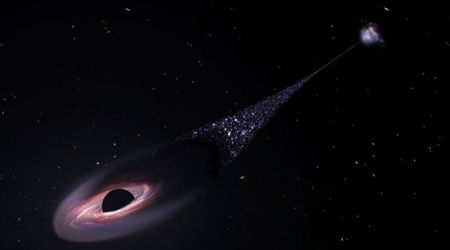Japan's ispace misses the mark again as its lunar lander crashes into Moon — mission ends in failure

Japanese company ispace sent out its "Resilience" spacecraft on an uncrewed lunar mission to achieve a touchdown in the Mare Frigoris ("Sea of Cold") region of the moon. The lander was expected to succeed on June 5, 2025, at 3:17 p.m. EDT or at 4:17 a.m. on June 6, Japan Standard Time. However, telemetry from the lander halted one minute and 45 seconds prior to the planned touchdown, as per Space.com. This equipment malfunction led to the lander crashing into the lunar surface.

This was a disappointing failure for the ispace engineers after their first failed landing attempt in April 2023. Data before communication was lost indicated that the lander's laser rangefinder, a sensor designed to measure the distance to the moon’s surface, faced some delay. It was delayed to obtain “valid measurement values” of the probe's distance to the lunar surface, as per CNN. “As a result, the lander was unable to decelerate sufficiently to reach the required speed for the planned lunar landing,” ispace officials noted, assuming that the lander had a hard landing.
At this moment, we have not yet been able to establish communication with RESILIENCE, but ispace engineers in our Mission Control Center are continuing to work to contact the lander. We will share an update with the latest information in a media announcement in the next few… pic.twitter.com/D2TMGHK5f3
— ispace (@ispace_inc) June 5, 2025
Resilience had been circling the moon in a stable orbit and had successfully descended to about 12 miles above the surface. It had “successfully fired its main engine as planned to begin deceleration” and was confirmed to have a nearly vertical orientation before data was cut off. The lander was expected to finish a pitch-over or roll maneuver to change its horizontal position and be upright in alignment with the moon. This was when the altitude measurement faltered, and this resembled the 2023 Hakuto-R spacecraft of the company that failed at a lunar landing.
The software of Hakuto-R had miscalculated the altitude attempt due to an error, which led to a crash, but that was not the case for Resilience. “The data that we’ve been looking at — it wasn’t exactly the same as we have seen from the first mission,” stated Ispace’s Chief Technology Officer, Ryo Ujiie, about the data received by mission control. Ispace’s CEO, Takeshi Hakamada, stated that the mission was officially over as they stopped establishing contact with the lander. The team was focused on understanding their errors and applying them to their next attempt.

As of 8:00 a.m. on June 6, 2025, mission controllers have determined that it is unlikely that communication with the lander will be restored and therefore completing Success 9 is not achievable. It has been decided to conclude the mission.
— ispace (@ispace_inc) June 6, 2025
“Given that there is currently no… pic.twitter.com/IoRUfggoiQ
Ispace has not given up on its mission to land a private lunar lander on the moon’s surface, and they have set down a budget for a third attempt. "First, we have to figure out the root cause for the phenomenon we observed, and then we have to utilize it in Mission 3 and Mission 4," which would likely include the Apex 1.0 craft, according to Hakamada. Since the Resilience did not make its four-point "soft landing," the spacecraft would not be able to achieve its two-week functions, as per Space.com. Hence, Mission 3 and Mission 4 have been scheduled for 2027, at the earliest.
A private lunar lander from Japan apparently crashed while attempting a touchdown, the latest casualty in the commercial rush to the moon. It was ispace’s second lunar strikeout. pic.twitter.com/mDT2jFFCSF
— Eugene (@BreakingNews4X) June 6, 2025
"We know it's not going to be easy," stated ispace director and CFO Jumpei Nozaki during a press conference. "But it's hard. It has some meaning and significance in trying," they added. An apology was extended to the 80,000 supporters and stockholders. The Resilience lander was the company’s second uncrewed spacecraft, and a successful touchdown would have made it the first non-U.S. company to complete a controlled moon landing, as per The Guardian. Since its failure, the next mission placed high hopes on its Apex 1.0, which weighed two tons more than Resilience and could be more capable, per Space.com.









